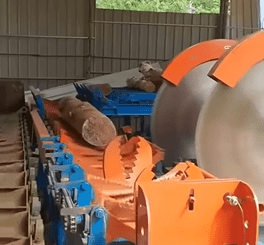
Welding is an intricate skill that demands a deep understanding of materials, techniques, and safety protocols. Professional welders are expected not only to join metals but also to perform precise cutting and create strong, durable joints. Whether you’re a novice welder or a seasoned expert, mastering the right techniques can make all the difference in achieving high-quality results. Here are some essential tips and tricks for professional welders when cutting and making various kinds of joints.

1. Choosing the Right Cutting Method
The method of cutting you choose can significantly affect the quality of your weld. Different materials and thicknesses require different cutting approaches. Here’s a quick rundown of some popular cutting methods:
- Oxygen-Acetylene Cutting (Oxy-fuel): This method is versatile, ideal for cutting mild steel. It uses a combination of oxygen and acetylene to create a hot, high-velocity flame that melts and blows away the metal.
- Plasma Cutting: Plasma cutters are excellent for cutting thin to medium thickness metals quickly and precisely. They work by passing an ionized gas through a narrow nozzle, which melts the metal as it is blown away.
- Laser Cutting: Although not always a common tool in welding shops, laser cutting is known for its precision. It uses a focused beam of light to cut through metals, offering highly accurate results and minimal material distortion.
Selecting the appropriate tool for your material and application can enhance both the quality of your cuts and the efficiency of your workflow.

2. Properly Preparing the Material
Good preparation is critical for both cutting and welding. Before you start cutting, always ensure the material is clean and free from contaminants like rust, oil, or paint. Contaminants can cause issues such as poor cuts, material distortion, or weld defects.
For cutting operations, be sure to mark your cut lines with a chalk or grease pencil for accuracy. When making joints, always bevel or prepare the edges properly to ensure better fusion during welding. For thicker materials, use a grinder to remove any burrs or sharp edges that could cause problems later.
3. Mastering Different Welding Joints
Understanding and perfecting the different types of welding joints is crucial for creating strong, reliable welds. Here are some common joints you should know:
- Butt Joint: This joint involves two pieces of material meeting edge to edge. It’s the most common type of joint in welding. Proper alignment and preparation are key to achieving a clean, strong weld.
- Corner Joint: Typically used when two pieces meet at a 90-degree angle, corner joints often require a fillet weld. A good technique for corner joints is to first tack the pieces in place, ensuring they are square, and then complete the weld in short passes to avoid warping.
- Tee Joint: This joint is formed when one piece of metal meets the center of another at a right angle. It’s often used in structural welding. To avoid gaps and ensure the metal heats evenly, a consistent filler rod application is necessary.
- Lap Joint: This joint is formed when two pieces of material overlap each other. While lap joints can be quicker to prepare and weld, they do tend to require more filler material, so controlling heat is crucial to prevent warping.

4. Control Heat and Speed
Managing heat input is essential when welding, as too much heat can warp the material or create poor penetration, while too little heat can result in weak welds. For thin materials, consider using lower settings on your welder and faster travel speeds to prevent burn-through. On thicker metals, you’ll need a higher amperage and slower speed to ensure proper fusion.
Using the right welding rod or wire is also important for controlling the heat and penetration. Always choose a filler material that matches the base metal’s composition to ensure the weld’s strength and durability.
5. Safety First
Welding involves high temperatures, intense light, and hazardous fumes, so always prioritize safety. Always wear proper protective gear, including welding gloves, a helmet with the correct shade of lens, fire-resistant clothing, and proper footwear. Make sure your work area is well-ventilated to reduce exposure to fumes and gases, and ensure that any flammable materials are removed from the vicinity.
Conclusion
Professional welding requires a combination of technical skill, precision, and safety awareness. By selecting the right cutting methods, properly preparing materials, mastering welding joints, controlling heat, and adhering to safety protocols, welders can produce high-quality, reliable results. Whether you are cutting, fabricating, or welding, these tips will help elevate your craft and ensure a strong, durable weld every time.


